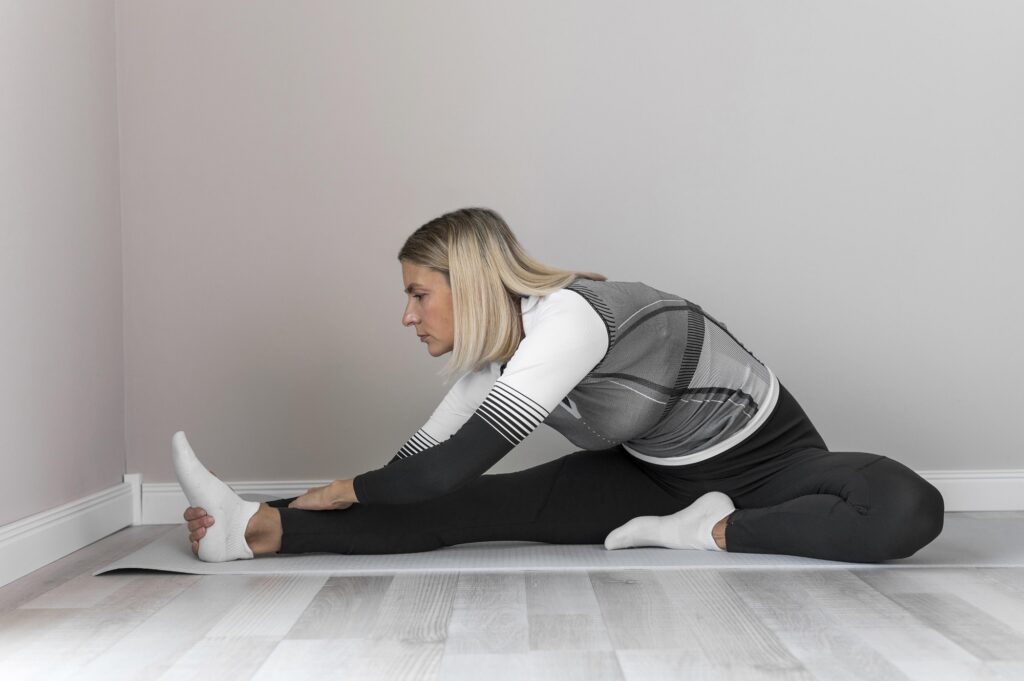The Science and Significance of Good Posture
Good posture is vital for overall health and well-being. It involves maintaining the spine’s natural curves, which evenly distribute forces across the body, reducing strain on muscles, ligaments, and joints to prevent pain and injury. To improve your posture, it’s essential to address muscle imbalances that can lead to discomfort and serious conditions like herniated discs or nerve damage. Posture relies on the interplay of muscles, bones, and nerves. Core muscles stabilize the torso, while muscles in the shoulders, neck, and pelvis support alignment. The nervous system controls these muscles through signals, and poor posture can disrupt this balance, causing tension. Poor posture and physical inactivity are also linked to metabolic conditions like diabetes, further emphasizing the need for maintaining proper alignment. Understanding this science highlights the importance of posture exercises for long-term health.
Common Posture Problems and Their Causes

There are several common posture problems that many people face, each with its own set of causes. One prevalent issue is forward head posture, where the head leans forward, putting strain on the neck and shoulders. Another common problem is rounded shoulders, which occur when the shoulders curve forward, often due to prolonged sitting or poor ergonomics.
Lastly, there’s the issue of anterior pelvic tilt, where the pelvis tilts forward, causing an exaggerated curve in the lower back. This often stems from prolonged sitting and lack of core strength. Addressing this imbalance through targeted exercises and lifestyle changes can also support overall fitness goals, including weight loss.
Top Exercises to Improve Your Posture
Improving your posture involves stretching and strengthening key muscles. Consider these top exercises:
- Plank: Strengthens core muscles, providing stability and support for your spine.
- Wall Angels: Helps open up the chest and strengthen upper back muscles, counteracting rounded shoulders.
- Chin Tucks: Targets neck muscles, promoting alignment and reducing forward head posture.
Incorporate these exercises regularly, focusing on proper form and gradually increasing intensity. Activities like yoga and Pilates can also improve flexibility, strength, and posture, when paired with a well-balanced diet chart.
Stretching Techniques for Better Posture
Stretching improves posture by increasing flexibility, reducing muscle tension, and promoting proper alignment. Effective stretches include:
- Cat-Cow Stretch: This gentle yoga pose increases flexibility in the spine and relieves tension in the back.
- Chest Opener Stretch: Counteracts tightness in the chest and shoulders, common with poor posture.
- Hip Flexor Stretch: Addresses tight hip flexors, which contribute to anterior pelvic tilt.
Incorporate these stretches daily, holding each for 30 seconds with deep breathing. Consistent stretching with the aid of soft pillows, improves posture, increases mobility, and reduces injury risk.
Strengthening Muscles for Posture Support
Strengthening exercises build the muscles needed to support good posture, focusing on the core, back, and shoulders. Along with regular exercise, buy natural pillows to maintain proper spinal alignment and comfort during rest—an essential part of posture care. Effective exercises include:

- Back Extensions: Strengthen the lower back, improving spinal support and reducing the risk of injury.
- Shoulder Blade Squeezes: Enhance the strength of upper back muscles, counteracting rounded shoulders.
- Dead Bug Exercise: Targets the core, promoting stability and alignment.
Incorporate these exercises 2–3 times a week, gradually increasing resistance as you get stronger. Focus on proper form and consider consulting a fitness professional. Strengthening these muscles improves posture, reduces pain risk, and supports a more active lifestyle.
Daily Habits to Maintain Good Posture
In addition to exercises, cultivating daily habits that promote proper posture is essential. Be mindful of your posture throughout the day by maintaining a neutral spine and avoiding slouching. Adjust your workspace so your chair, desk, and monitor are at appropriate heights to prevent strain. Take regular breaks to stand, stretch, and move around, especially if sitting for long periods.
Practicing mindfulness and body awareness through activities like meditation and yoga can help you maintain good posture naturally. Integrating these habits into your daily routine supports lasting posture improvement.
The Role of Ergonomics in Posture Improvement
Ergonomics plays a significant role in enhancing your posture, particularly in work and home environments. By arranging your surroundings to support natural body alignment, you can reduce the risk of discomfort and injury. Here are some ergonomic principles to consider:
- Workspace Setup: Ensure your chair, desk, and computer monitor are at appropriate heights to prevent strain on your neck and back.
- Proper Footwear: Wear shoes that provide adequate support and cushioning, especially if you stand for extended periods.
Implementing ergonomic principles not only contributes to better posture but also enhances productivity and comfort. Regularly assess your environment and make adjustments as needed to support your posture improvement efforts.

Conclusion
Embracing a posture-positive lifestyle involves awareness, practice, and support. By incorporating exercises, stretching, and daily habits into your routine, you’ll build the strength and flexibility needed for good posture. Applying ergonomic principles further helps maintain proper alignment throughout your day.
Improving posture is a gradual process requiring dedication and consistency. Small, daily efforts can lead to significant, long-term benefits for your health and well-being, including reduced pain and enhanced confidence.